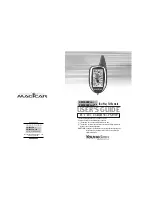
Electrical installation
59
3ADW000462R0301 DCS880 Hardware Manual e c
Connecting the signal and control cables
Used screened cables for digital signals, which are longer than 3 m and for all analog signals.
Connect each screen at both ends by metal clamps or comparable means directly on clean metal
surfaces, if both earthing points belong to the same earth line. Otherwise, connect a capacitor to
earth on one end. In the converter cabinet this kind of connection must be made directly on the sheet
metal close to the terminals and if the cable comes from outside also on the PE bar. At the other end
of the cable, connect the screen well with the housing of the signal emitter or receiver.
Routing the cables
Run the motor cable away from other cables. Motor cables of several drives can be run in parallel
next to each other. It is recommended that motor cables, input power cables and control cables be
installed on separate trays. Avoid long parallel runs of motor cables with other cables in order to
reduce electromagnetic interference caused by rapid changes in the drive output voltage.
Where control cables must cross power cables make sure they are arranged at an angle close to 90
degrees. Do not run spare cables through the cabinet.
All cable trays must have good electrical connection to each other and to ground. Aluminium tray
systems can be used to improve equalizing of potential.
The following diagrams show the proper routing of cables:
Connection of cable
screens with metal clamps
to the metal surface of the
electronic tray.
Size H7, H8
screen connection
SA_DCS_001_kabel_b.ai
Drive
Input power cable
min 200 mm
min 500 mm
min 300 mm
min 300 mm
Control cables
90°
Motor cable
Armature cable
Field cable
Power cable
24 V
DC
115 / 230 V
AC
24 V
DC
115 / 230 V
AC
SA_DCS_002_kab-kanal_a.ai
Route 24 V
DC
and 115 /
230 V
AC
control cables in
separate ducts inside the
cabinet.
Not allowed unless the 24 V
DC
cable is insulated for 230 V
AC
or
insulated with an insulation
sleeving for 230 V
AC
.
















































